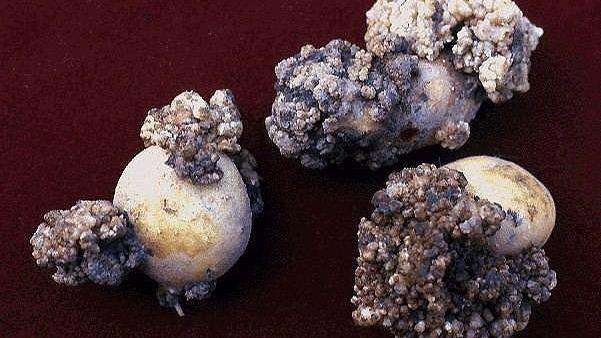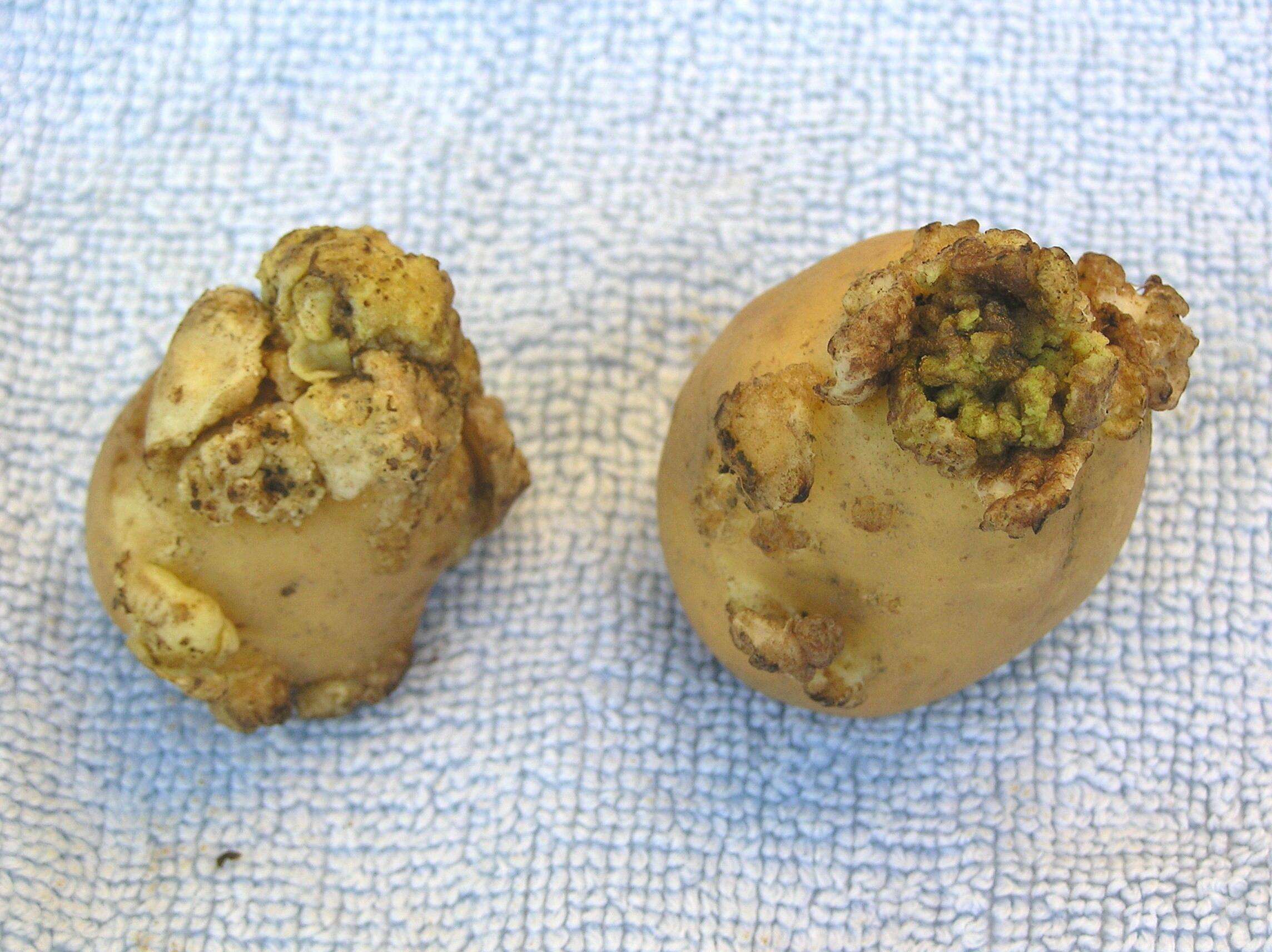Potato Wart

Synchytrium endobioticum is a soilborne fungal pathogen that requires a living host to reproduce. It infects cultivated potato (Solanum tuberosum) and produces thick-walled resting spores within the tuber. The tuber becomes distorted with warts, which is why the disease is called potato wart. The resting spores can survive at depths of 50 cm in soil and remain viable for up to 30 years without a plant host. The fungus thrives in wet conditions.
Potato wart was discovered in the United States in Pennsylvania in 1918, and then later in Maryland and West Virginia. It was eradicated in 1994 and has not been detected since. The disease can spread by infected tubers, infested soil attached to potato tubers, machinery, implements used in infested potato fields, footwear, and manure from animals that have fed on infested tubers. Potato wart reduces crop yields, making potatoes unmarketable.
Symptoms above ground are rare but plants may show reduced vigor and leaf and shoot malformations. If aboveground symptoms are visible, galls (wart-like growths) start out as green to brown and then turn black. Potato wart is usually seen when plants are lifted out of the ground during harvest. Tubers have abnormal wart-like growths (galls) which can be as small as a pin or as large as a fist. The galls can form at the base of the stem and below-ground portions of the plant. These galls are white, soft, and pulpy in texture. As they decay, they turn black.

To prevent the spread of potato wart, don't move:
- Infected tubers
- Infested soil
- Footwear, machinery, and tools contaminated with infested with soil
- Manure from animals that have fed on infected potato plants
Quarantine: If potato wart is detected, all positive fields and any fields that have come in contact with infected crop residue, seed, or infested soil will be placed in quarantine. Movement of infected host materials, soil, and other regulated articles, including tubers, rooted plants, etc. will be regulated.
Host Removal: All potato crops growing in the quarantine area must be destroyed. The plant debris must be handled using an approved method.
Host Resistance: Resistant potato varieties have been used to manage S. endobioticum. Researchers know little about the resistance to or susceptibility of preferred U.S. potato varieties to this pathogen.
Non-Chemical Treatments: There are no non-chemical treatments available for use against S. endobioticum.
Report Plant Pests and Diseases
Have you seen this pest or signs of pest damage? Immediately report your findings. Because the fungus that causes potato wart is a Select Agent for the United States, it must be reported to regulatory officials.
Find your State plant regulatory official
Find your State plant health director
Controlling Potato Wart
S. endobioticum is considered a Federal quarantine pest and is not known to occur in the United States. This pathogen is also a Select Agent for the United States. Samples suspected to be positive for S. endobioticum must be handled according to the Select Agent Program requirements:
- Federal Select Agent Program
- Code of Federal Regulations: Possession, use, and transfer of select agents and toxins
- Federal Order for U.S. Imports of Potatoes from Prince Edward Island (PEI), Canada to Prevent the Entry or Introduction of Synchytrium endobioticum, the Causative Agent of Potato Wart (Effective April 1, 2022)
- Potato Wart Detection on Prince Edward Island, Canada (November 5, 2021)
- Restrictions on Potatoes and Soil from Prince Edward Island, Canada due to Potato Wart (November 22, 2021)
- USDA Select Agent regulations

